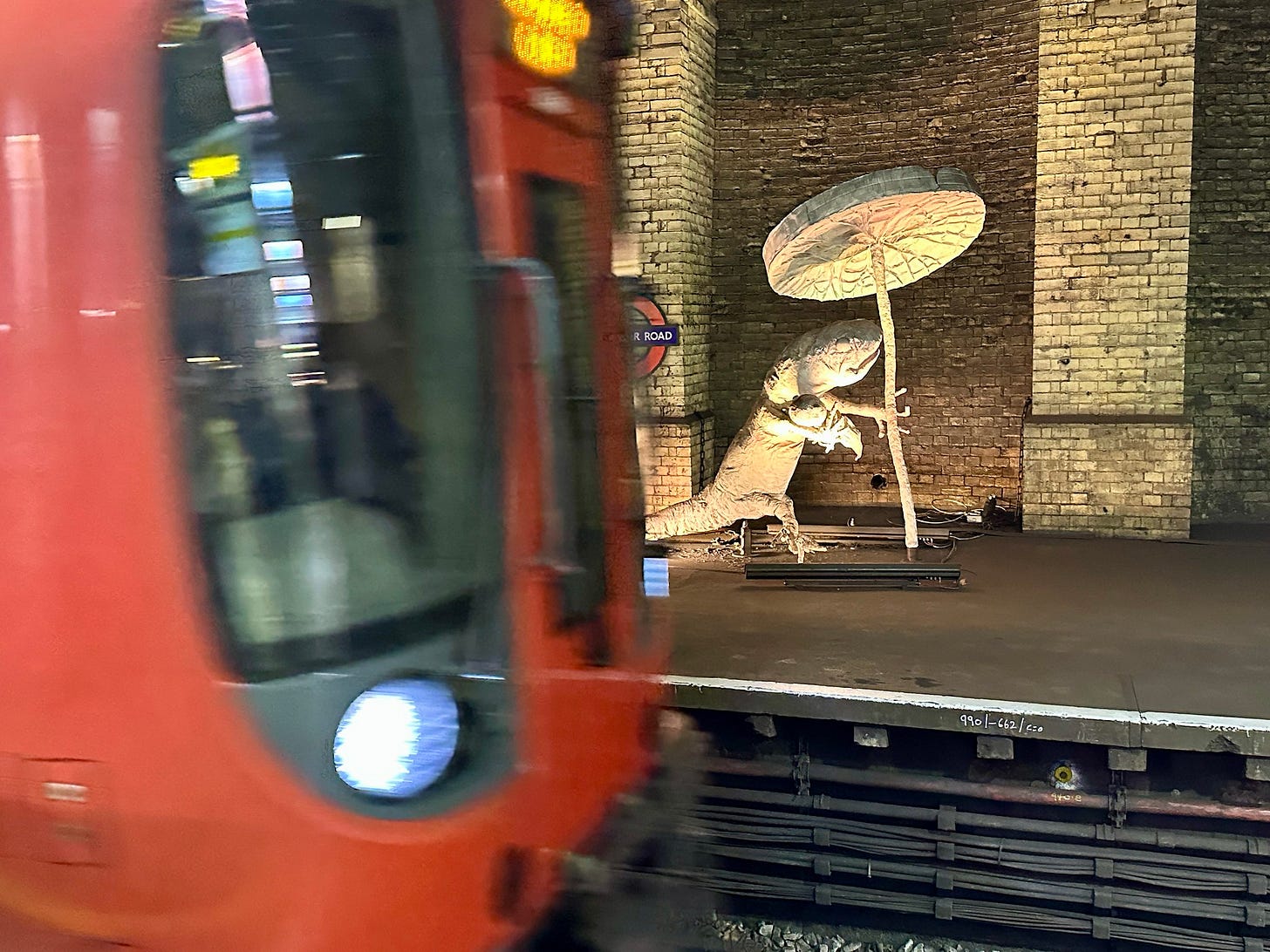Five... artworks from the history of the London Underground
Happy 25th birthday, Art on the Underground
This is a guest post by Lydia Manch, originally published on our sister newsletter Londonist: Time Machine.
Make sure you’re subscribed to receive weekly articles about the city’s history from unusual angles, and join thousands of other London history enthusiasts.
This edition’s a handful of moments from the history of Art on the Underground — specifically, artworks that first saw the light of day (or the fluorescent non-daylight of a tunnel deep below the streets of the city) on London’s public transport network.
The programme, originally called Platform for Art when it started in 2000, was renamed Art on the Underground in 2008 in acknowledgement of the way it had expanded beyond its first remit. Over its 25 years the project has come to span different media and different types of site — from the pocket-sized and pan-network — like Yinka Shonibare’s tube map (Global Underground Map, 2006) — to the towering and site-specific — like Lucy McKenzie’s giant ceiling murals at Sudbury Town tube station (Pleasure’s Inaccuracies, 2020), and Yayoi Kusama’s huge installation of silver orbs outside Liverpool Street station (Infinite Accumulation, 2024). Michael Landy embedded his designs celebrating everyday acts of compassion and connection into the Central line seat moquette (Acts of Kindness, 2011). Jim Isermann took a bigger canvas and wrapped an entire Piccadilly Line train in his artwork (Thin Cities, 2007).
And there’s more coming this year. To mark its 25th birthday, Art on the Underground’s announced some major new artworks scheduled for 2025:
The latest pocket tube map, scheduled to launch in the spring, features a cover designed by conceptual artist Agnes Denes — a rendering of her artwork Map Projections, in which she reimagines the earth in different shapes
Ahmet Öğüt's Saved by the Whale's Tail comes to Stratford Underground station this year — inspired by an incident in 2020 when a train on the Rotterdam Metro overran a station located on an elevated line and a carriage was 'saved' from plummeting off the edge by Maarten Struijs' 10-metre-high sculpture of a whale’s tail, which prevented its fall
A new mural at Brixton tube station in November 2025, by Rudy Loewe in the artist's comic book-inspired style
An audio work by Rory Pilgrim will be played along the moving walkway connecting the Northern and Jubilee lines at Waterloo station from 30th June-13th July
Monster Chetwynd, Gloucester Road

One of the tube network’s most regularly adorned spaces, the disused platform at Gloucester Road tube station’s seen some memorable, large-scale artworks since it launched in 2000 with Kendra Haste’s Underground Safari — a series of sculptures that had a rhino, a giraffe, oryx and gazelles leaping out of shadowy alcoves towards commuters.
Since then a raft of other artists have been commissioned for the space, including Cindy Sherman, Beatriz Milhazes, and Heather Phillipson. Still one of my favourites, though, is the current installation: Monster Chetwynd’s takeover of the platform opened in 2023, and it’s in situ till May this year if you want to see the series of artworks in person — sculptures of frogs, salamanders and lilypads scatter the platform, inspired by the history of the station. The Crystal Palace, built for the Great Exhibition of 1851 which took place in nearby Hyde Park, was designed by gardener-turned-architect Joseph Paxton and based on the giant Amazonian water lily. The Great Exhibition led to big cultural redevelopment of the area, including the creation of South Kensington’s 3 big museums — which Gloucester Road tube station was built to help serve.
Keep reading with a 7-day free trial
Subscribe to Londonist: Urban Palette to keep reading this post and get 7 days of free access to the full post archives.






